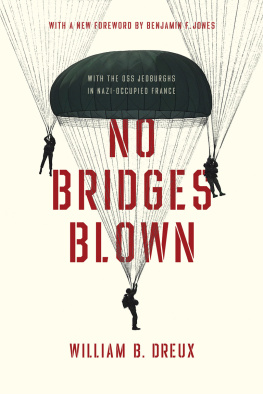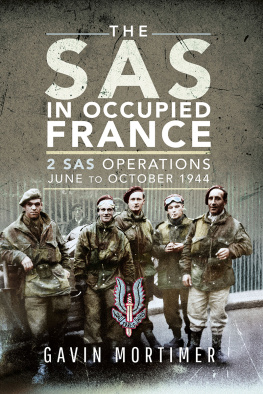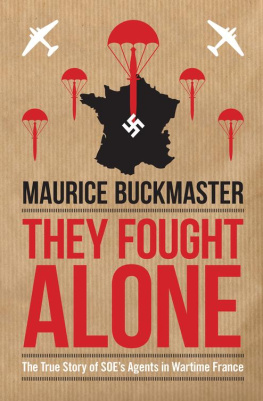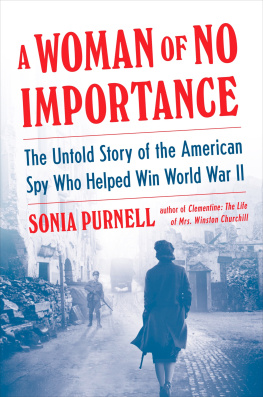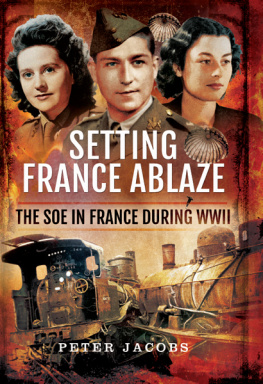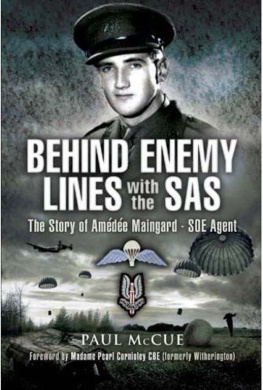Landmarks
Page-list
Advance Praise for
NO BRIDGES BLOWN
Quietly written yet intensely interesting.
Publishers Weekly
A readable and interesting reconstruction of the past!
Library Journal
I recommend No Bridges Blown as a book that ought to be a classic of wartime literature. I recommend it to anyone who wants to understand the personal implications of war, the stress of life in occupied territory, some of the roots of American special operations forces, or just wants a fascinating and beautifully written explanation of a tiny piece of the fight in France.
Russell Worth Parker, Lieutenant Colonel, U.S. Marine Corps
The men and women of the Office of Strategic Services (OSS) were some of the most dynamic and pioneering in American history. Jedburgh captain William Dreuxs compelling prose captures not only the gristle but also the meat of these important contributions in his World War II memoir No Bridges Blown. Whats old is newthe tenets and principles developed by the OSS continue to ring true in todays conflicts.
Patrick K. ODonnell, best-selling author of The Unknowns and First SEALs
No Bridges Blown is one of the most authentic accounts of life behind-the- lines in Occupied France that Ive ever read.
Colin Beavan, author of Operation Jedburgh
William Dreuxs account of his time with the elite Jedburgh teams of the OSS is the rare war story offering a glimpse into the vital work that took place behind the lines of battle. No Bridges Blown is a compelling, illuminating memoir of his time working with the French Resistance, a valuable companion to tales of combat.
Gregory A. Freeman, author of The Forgotten 500
No Bridges Blown
NO
BRIDGES
BLOWN
With the OSS Jedburghs in Nazi-Occupied France
WILLIAM B. DREUX
with a New Foreword by
BENJAMIN F. JONES
University of Notre Dame Press
Notre Dame, Indiana
Copyright 1971 by University of Notre Dame
Original cloth edition published in 1971
by the University of Notre Dame Press
Notre Dame, Indiana 46556
New paperback published in 2020
All Rights Reserved
Published in the United States of America
Library of Congress Control Number: 2020933746
ISBN: 978-0-268-10797-0 (Hardback)
ISBN: 978-0-268-10798-7 (Paperback)
ISBN: 978-0-268-10800-7 (WebPDF)
ISBN: 978-0-268-10799-4 (Epub)
This e-Book was converted from the original source file by a third-party vendor. Readers who notice any formatting, textual, or readability issues are encouraged to contact the publisher at
To L. S.
and the others who didnt make it
Grateful acknowledgment is made for excerpts from the following works:
The Soldier by Rupert Brooke. Reprinted by permission of Dodd, Mead & Company, Inc., from The Collected Poems of Rupert Brooke. Copyright 1915 by Dodd, Mead & Company; copyright renewed 1943 by Edward Marsh.
Under Ben Bulben by W. B. Yeats, from Collected Poems by W. B. Yeats, reprinted by permission of The Macmillan Company. Copyright 1940 by Georgie Yeats, renewed 1968 by Bertha Georgie Yeats, Michael Butler Yeats and Anne Yeats.
A Rendezvous with Death by Allan Seeger. Reprinted by permission of Charles Scribners Sons.
Poem by Patrick Shaw Stewart reprinted from Dialogue with Myself by Martin C. DArcy, S.J., copyright 1966, by Martin C. DArcy. Reprinted by permission of Simon & Schuster, Inc. publishers.
Contents
The Congressional Country Club and Raleigh
Manhattans
Nous nirons plus au bois, Jes Iauriers sont coupes.
Theodore de Banville
Foreword to the 2020 Edition
William Dreuxs No Bridges Blown is a great book not only because it tells an interesting story about a poorly understood topic of great importance but because it tells it so well. Its certainly deserving of being republished so that we can use its wisdom today. The marvelous title evokes the futility of war in a Hemingway-like manner, and the experiences Dreux describes are both timely and rooted in historys constants. How friendships are made, adventures experienced, and ambiguity endured can be fruitfully compared to American soldiers experiences since the end of the Second World War to today.
Dreux was a member of the Jedburghs, an Allied unit comprised of special warfare soldiers from the United Kingdom, United States, France, the Netherlands, and Canada. The British Special Operations Executive anticipated the difficulty of replacing their intelligence operatives after the Allies invaded France on D-Day, when the German army and Vichy French police would find greater opportunities to arrest or kill British and French spies. Thus they developed the Jedburgh team concept: its members would parachute behind the German lines, make contact with already existing networks of resistance fighters, replace the recently lost British agents, and maintain operational momentum to conduct an unconventional war in enemy territory. Short of manpower, the British asked the United States to collaborate and contribute soldiers, aircraft, and other resources. After exercising and rehearsing the concept, the British realized native speakers would be critical to success, and so they also asked the French and Dutch to contribute soldiers to the effort. The French took up the offer with zeal as a way to contribute to Frances liberation and as an opportunity to demonstrate to the British and American governments that France maintained its sovereignty.
The Jedburgh operation was the first planned guerrilla campaign designed to support a conventional campaign since the period when modern technology had made frequent tactical modifications possible after the campaign was underway. The British Special Operations Executive and the American Office of Strategic Services were led by people who had served in Ireland, India, the Middle East, Central America, and the Philippines. Moreover, they had read T. E. Lawrence closely, but twenty years after Lawrences campaign, armies could now use encrypted radio communications and the airplane to link the conventional and unconventional forces to each other. The Allied commander, General Dwight D. Eisenhower, wanted to use the French Resistance, but in a controlled manner that did not feed the German Army and Gestapos penchant for atrocities. The Jedburgh plan provided him a way to do that, because it meant that French soldiers and French resistance groups would be under his command. Having a French officer, General Marie-Pierre Koenig, a leader of the Free French of the Interior, be his commander for unconventional warfare in France became the means to communicate with and coordinate guerrillas across a wide swath of occupied France. The Allied Jedburgh teams then reported to Koenig, a French general, who reported to Eisenhower. Because of this complicated arrangement that placed different nations together to fight a war for which they sought meaningfully different aims, the Jedburghs fog of war was thicker than most.
Having Allied special forces operate in Jedburgh teams was a creature of its time. The British, American, and French agreed on this very odd idea of making an Allied unit down to the tactical level because each nation got something from it. But this Allied operational team concept was not to last beyond the war, as it proved too difficult to hold together when the conditions changed and the aims diverged even more. Over and above the typical complexities of combat, resistance leaders were unsure of their orders, their authority, their friends, and their enemies; long-suffering civilians were exhausted by wars deprivations; a desperate but weakened enemy was comfortable with atrocity; and three nations warred with two nations, one of whom was on both sides. This was the fog that William Dreux and his Jedburgh teammates parachuted into in 1944.

